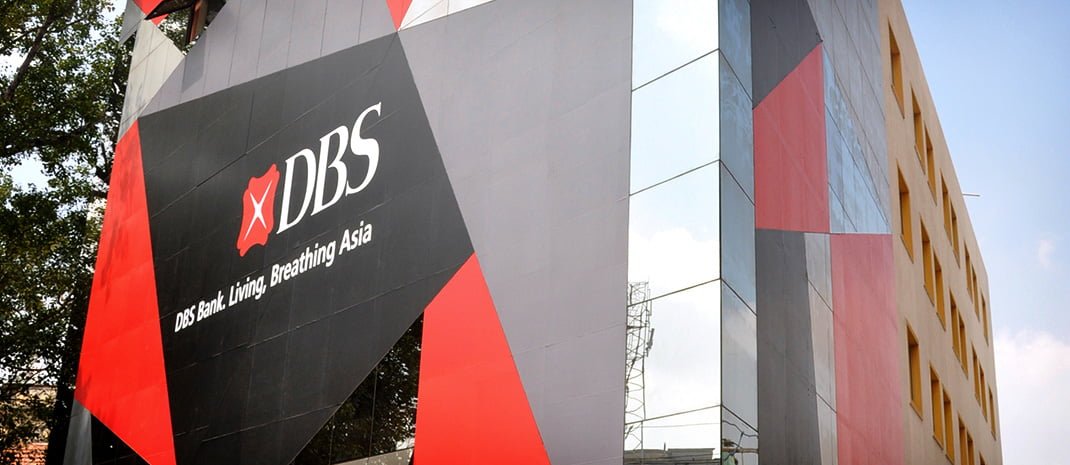National Infra Pipeline 6,500+ projects
With higher fiscal headroom to accommodate spending, it should be marginally positive for growth for India following the measures announced in the Budget 2020.
Concurrently, cuts in the income tax rates (if the take-up rate is good) will provide a short-term boost for consumption, said Singapore’s DBS banking group on 2 Feb 2020 on the budget.
The Finance Minister Nirmala Sitharaman tabled the budget in parliament on 1 Feb 2020.
Encouragingly, the Singapore bank’s DBS GDP Nowcast model is pointing towards a stabilization in the trend in 4Q19 (3Q FY20). Indicators like manufacturing PMIs, auto sales, industrial production, power demand and core infra industries output, amongst others, have turned up, helped also by festive-related demand and restocking demand.
This stabilization will be more pronounced in sequential trends, with the final quarter of FY also seasonally the strongest. YoY growth pace will, however, be soft due to base effects, with a gradual cyclical updrift expected into FY21. This combined with our forecast for an above-target inflation bodes well to lift nominal GDP growth back above 10% from sub-8% in FY20.
Fii News reproduces the DBS commentary:
The FY21 Union Budget carried a counter-cyclical bent, with the FY20 (revised estimate) deficit pegged at -3.8% of GDP and FY21 at -3.5%. This overshoot was backed by evoking the ‘escape clause’ under the Fiscal Responsibility and Budget Mechanism (FRBM), which allows for a 0.5% deviation on targets provided certain underlying conditions are fulfilled.
This rests on the premise of slow growth conditions which has been caused by “structural reforms in the economy with unanticipated fiscal implications”.
Key measures
To boost consumption in the near-term, income tax rates were lowered along with rationalization in exemptions. Other key taxation changes included removal of the DDT (Dividend distribution tax) and shifting the onus to the investor, along with increase in few import taxes.
Efforts are also underway to further open up the local bond market to foreign participation – foreign portfolio ceiling into corporate bonds was raised from 9% of outstanding to 15%, certain specified categories of government securities would be opened fully to non-resident investors, along with domestic investors, along with tax relief for sovereign funds.
The social and welfare construct was also maintained with emphasis on the rural sector, health, education, climate change, amongst others. Investment focus for the medium-term was reinforced by plans to stay on course with the National Infra Pipeline, and also attracting investments into electronics and semi-conductors’ industries.
Cognizant of the gradual recovery in growth and thereby turnaround in direct/indirect tax revenues, much of the burden of revenue generation was put on divestment receipts and dividends. This was complemented by plans to privatise a financial institution as well as conduct an IPO for part of the state’s stake in the national insurance company.
Absence of clear-cut support measures for the non-banking sector weighed on the markets, as was lack of further capital infusion into the banking sector. This points to business-as-usual progress on the deleveraging process, intermittent concerns over institutional strength as well as modest pace of dispute resolution.
Sifting through the fiscal math
For FY20, the underlying nominal GDP growth assumption was lowered by over three percentage points given the slower actual run-rate. Basis the revised growth estimate, the government expects a 0.2% of GDP shortfall in total receipts, with slower tax revenues compensated by better non-tax collections.
April-December actual numbers, however, belie some of that optimism. Hence the math for rest of FY20 assumes a late spurt in revenue collections as well as a pick-up in nominal GDP growth. Expenditure outlays were largely maintained vs FY20 budgeted estimated. In all, given the current run-rate for FY20, there is a possibility that revised FY20 numbers could be tempered but we don’t expect large scale revisions.
For FY21, the projected nominal GDP growth at 10% is relatively realistic as growth picks up from a trough in FY20, as well as due to higher deflators. Digging deeper, tax and indirect revenue assumptions as a % of GDP are not largely different. However significant tax buoyancy is implicitly assumed. As % YoY, direct taxes is expected to jump 12.7%, notwithstanding the corporate and income tax cuts.
This is accompanied by 11% rise in indirect taxes, resting on a 12.8% increase in the centre’s GST collection to Rs.5.8 trillion vs Rs.5.1 trillion in FY20.
Burden of revenue generation falls on non-tax receipts, particularly divestment where the target has been raised to Rs.2.1trn (0.9% of GDP) in FY21 vs Rs.0.8trn (0.3%) in FY20. This is likely backed by a) five strategic stake sales announced last year, b) plans to table part of the national insurance company public, c) plans to sell the entire 46.5% stake in IDBI Bank as announced on 1 Feb 2020.
Alongside assumptions on contribution from telecom is also ambitious (at Rs.1.3 trillion vs Rs.0.6 trillion revised in FY20). Contribution from RBI dividends is pegged at Rs.600 billion according to govt officials.
Under expenditure, there is a bigger thrust towards increasing allocations to capital spending, pegged at 18% yoy outpacing revenue spend. Revenue vs capital expenditure ratio is still in sideways gait. Given the emphasis on infrastructure and need to support growth through higher public spending, these allocations will take up the additional fiscal headroom provided by the higher fiscal target for FY21.
In all, a more realistic nominal GDP assumption provides credence to the budgetary assumptions. The element of optimism in direct and indirect tax collections runs on the likely revival in growth as well as efforts to widen the tax base and improve compliance. Market conditions will also need to be conducive with suitable valuations to achieve the aggressive divestment targets. We note:
Highlights of the measures
Taxation: Personal income tax slabs were tweaked, with annual incomes before Rs.500,000 exempted from tax and subsequent levels also likely to enjoy lower taxes. Exemptions will, however, be rationalized to lower the net impact on collections. The important tax breaks that will not be available under the new regime include Section 80C (Investments in PF, NPS, Life insurance premium) – makes over 70% of total in FY19, Section 80D (medical insurance premium), tax breaks on HRA and on interest paid on housing loan, amongst others, according to the press reports. Import taxes have also been raised on select product groups.
Concurrently, the Dividend Distribution Tax (DDT) has been removed and it will be tax in the hands of the recipients at their applicable rate. Revenue foregone could amount to 0.1% of GDP.
Financial markets: Foreign portfolio investors (FPIs) limit in corporate bonds has been raised to 15% of outstanding issuance vs 9% earlier. Proposal is to open few government securities to be fully opened to non-resident Indians. New debt ETFs consisting mainly of GSecs will be floated. In order to incentivize the investment by the Sovereign Wealth Fund of foreign governments in the priority sectors, they will be granted 100% tax exemption to their interest, dividend and capital gains income. The concessional withholding tax of 5% for interest payment to non-residents also stands extended to 2023.
Financial sector: Deposit insurance coverage will be raised to Rs.500,000 vs Rs.100,000 earlier.
Farm sector: States have been asked to adopt three central model laws on agricultural land leasing, marketing and contract farming, in a bid to improve farmers’ incomes.
Investments: An Investment Clearance Cell is likely to be set up to expedite approvals. In a bid to lower reliance on imports and provide an alternate destination vs regional peers, it was proposed to set up manufacturing facility for mobile, electronic equipment and semi-conductors, with details to be made available later. Development of industry and commerce was pegged at Rs273 billion in FY21.
To unlock working capital, the government plans to kickstart digital refund of state and central taxes to exporters. To achieve higher export credit disbursements, the NIRVIK initiative will be launched, aiming to provide high insurance cover but lower premium, and simplification of claim settlement through the digital network.
Infrastructure: Commitments under the National Infra Pipeline were reinforced, covering over 6,500 projects encompassing strategic highways, coastal and port roads. A national logistics policy is also underway. Power and renewable sectors will be allocated Rs.220 billion for FY21 towards this push.
Marking a move towards the new digital economy, Rs.80 billion will be allocated over next 5 years under the National Mission on Quantum Technology. Concurrently, data center parks for development of big data technologies will be underway. Skills development will get a push as IT firms are facing a shortage of digital talent.
Climate change: Drawing in support from states, the latter will be incentivized to promote clean air with population less than 1 million. High emission thermal plants are likely to face tighter vigilance.
Market implications
Equity markets ended the session in red, while debt markets (will open on 3 Feb 2020). Gross borrowings were pegged at Rs.7.8 trillion (adjusted for switching), along expected lines. Bond supply and optimism that ongoing tweaks could pave the way for a bond index inclusion eventually, will be construed as positives by the bond markets. Slippage in the fiscal targets was largely priced in, we don’t expect a lasting impact on the GSec yields. Small savings collections are expected at Rs.2.4 trillion in FY21, broadly steady from FY20 and continues to remain a key source of support on the financing end.
Notably, the global environment is bullish for bonds, as global central banks maintain loose monetary policies and outbreak of the coronavirus adds to the downdrift in global yields.
With fiscal policy taking a growth-supportive role, on the back of monetary policy being ahead of the curve last year, the calibrated policy mix should bode well for growth.
We look for the central bank to remain on an extended pause on rates (even as supply-induced shocks dissipate) but maintain an accommodative bias to ensure cost of capital remains stable and favourable. fiinews.com











